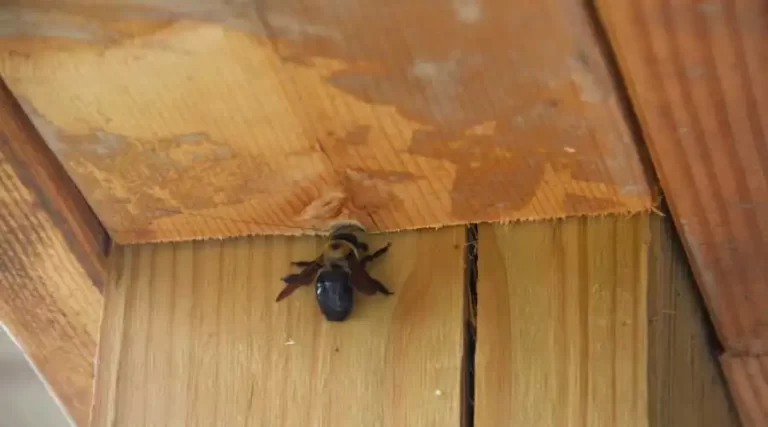How these bugs are even getting into my house is a frequent query we receive from many residents. The response? Whatever they can. Many pests in the California region can squeeze through small openings; for example, bark scorpions may pass through a space only 1/8″ wide or the width of a credit card. Roof rats need more room for obvious reasons, yet they may still enter via relatively small gaps. The four most typical pest entranceways into Valley houses are shown in the table below.
Typical insect entrance points into homes are:
- inadequately sealed doors
- foundational cracks, foundation utility penetrations
- Roof vents Individuals
Common pest entry points
Under doorways
Many pests enter your house via this route the most often. Many home front doors do not close securely against the threshold, leaving a tiny opening through which pests may enter. The garage door may not have formed a tight seal against the concrete due to wear and tear.
Roaches and scorpions are among the pests that may fit into small places. Any time light is outside your doors; they will use it to enter your house. It’s the same with windows. A shredded window screen is an apparent issue, but pests may enter a closed window via crevices surrounding the frame.
Weatherstripping around the door may prevent these issues and provide a tight fit inside the frame. The door may also need to be changed. A garage door company may be necessary. Technician to repair the rubberized seal, also known as the “astragal,” if it is ripped, worn, or otherwise damaged, preventing your garage door from sealing with the ground. Replace window screens with holes or rips, and look for any gaps surrounding the window.
Inside of foundation cracks
The majority of pests enter homes via the foundation, which is where your house meets the earth. It seems to sense that bugs would take advantage of foundation fractures to gain access to walls. Ants, cockroaches, termites, and spiders may fit through tiny foundational cracks or openings. Your house has moisture, food, and warmth, which will draw them in. Once inside, they have the potential to ruin your belongings, taint food, and grow. To maintain these pests out of your house, prevention is essential. The following section will review the advantages of our house sealing service, and foundation crack sealing process.
Penetrations in foundations
Utilities must enter through the foundation of every house. There is still a chance for insects to tunnel inside your home at each location. In the Valley, termites are infamous for hiding under toilets and beneath sinks.
Through roof vents
Many of the stucco houses in California have roof vents close to the roof line. These vents are crucial for your property because they enable heat and moisture from the roof to escape by moving from the vent on the eve or top to the vent at the ridge. However, if they are not secured, pests, particularly roof rats, may use them to enter your property.
When there are trees that hang over the roof or are near to it, this most often happens. Rats climb the trees and then venture onto a branch to enter your house. They will then go to the open vent in the attic to enter.
So, how do you restrict access? First, never time should block the roof vents. This might cause severe problems with moisture accumulation in your roof and attic. Instead, you should cover each hole with a metal mesh or other grate-like material. This permits air to enter and depart but hinders the entry of larger animals like roof rats. Since it’s likely that your property already has these covers, it’s crucial to maintain them so that they can continue to obstruct access to each vent.
The homeowner
Okay, so this component of insect protection doesn’t precisely fall within our purview of house sealing. However, you should be aware that the homeowner accidentally brings numerous pests—most notably bed bugs, roaches, crickets, and rodents—into a house. These hitchhikers may be traveling in your recent holiday baggage, or the cardboard box holding your internet buy. Regardless of how they got there, they all lived there since the homeowner unintentionally let them in.
Several measures may be taken to stop this kind of insect invasion in your home:
— To avoid spreading bed bugs from one location to another when traveling, take measures like keeping your baggage and personal goods on hard surfaces and inspecting your mattress and sofas for bugs before sitting or lying down. Clean and dry your clothes when you arrive home. And your baggage as soon as possible.
Open cardboard boxes left on the porch outdoors and then bring the goods in those boxes inside individually to prevent letting additional bugs in.
– You could open boxes on the porch or in the garage and carry the contents inside, leaving the packing outside to dispose of Clean and dry your clothes when you arrive home.
Prevent pest entry with the help of our team
Home sealing is a service we provide at Carlsbad Pest Control to help keep pests out of your house. The first stage in this 25-step procedure is an assessment to identify the pest access sites in your home. Our staff immediately starts working on sealing or blocking those points of entry. We caulk windows, install weatherstripping, screen your roof vents, and seal around air conditioners, electrical boxes, and other appliances.
Call us for a free pest inspection if your house in the Valley has been plagued by bugs, and be sure to ask our technicians about our home sealing service.

